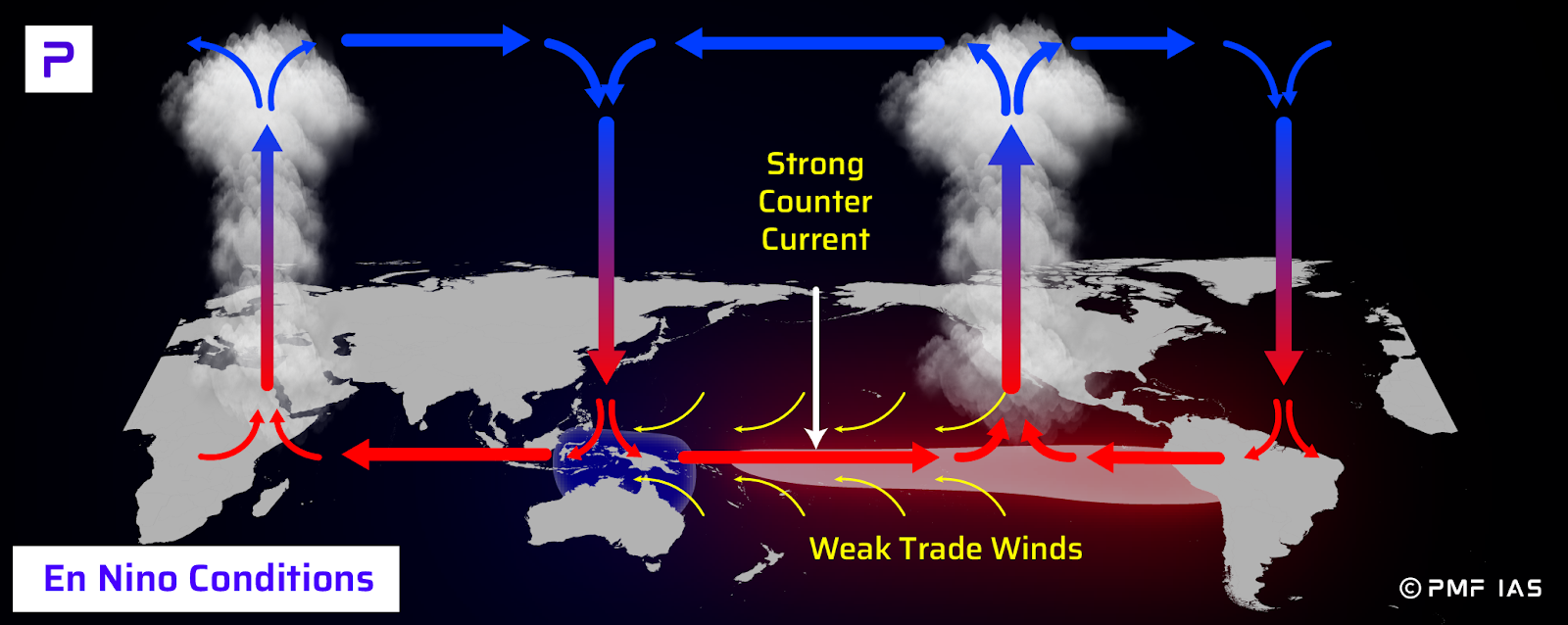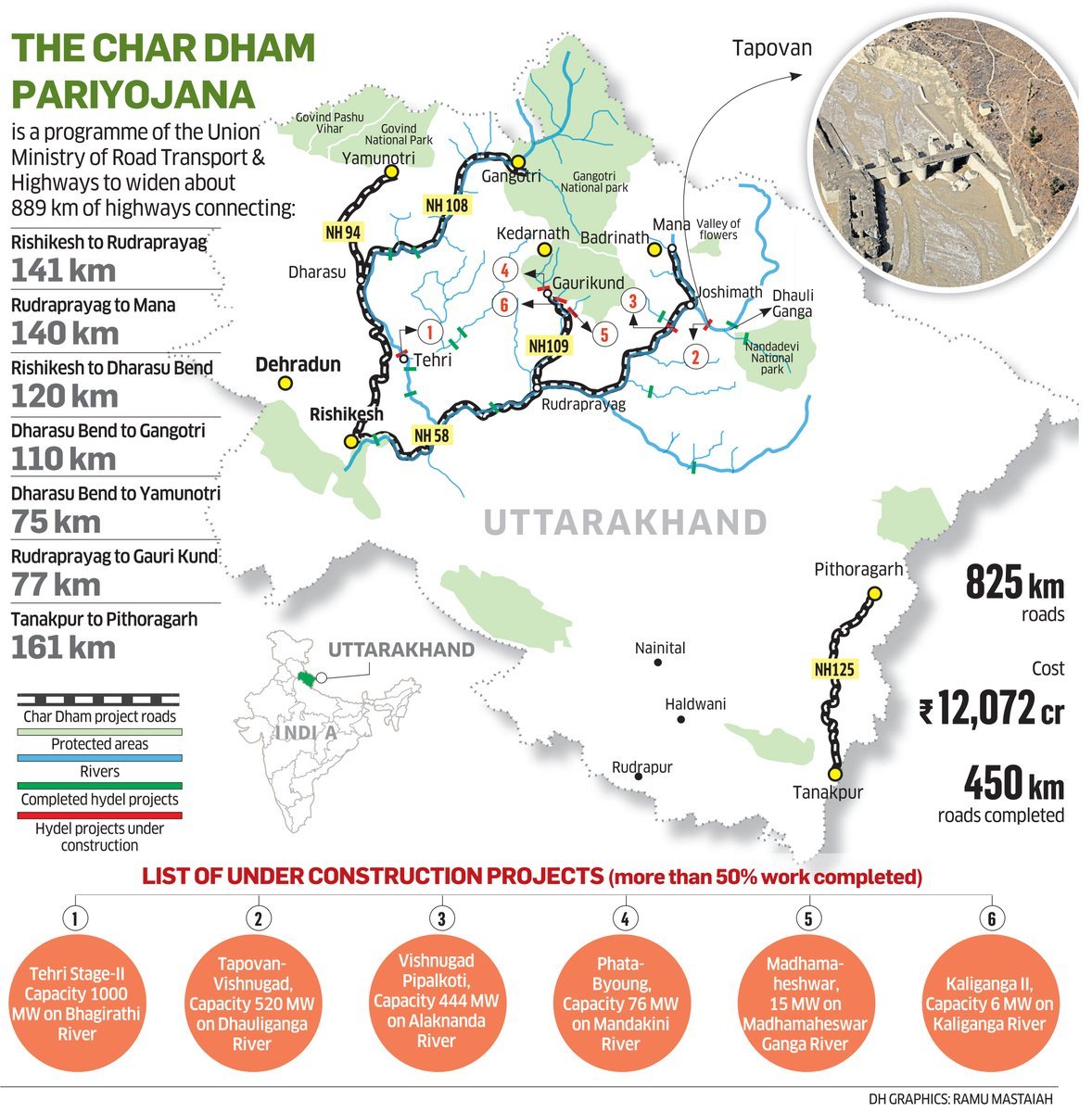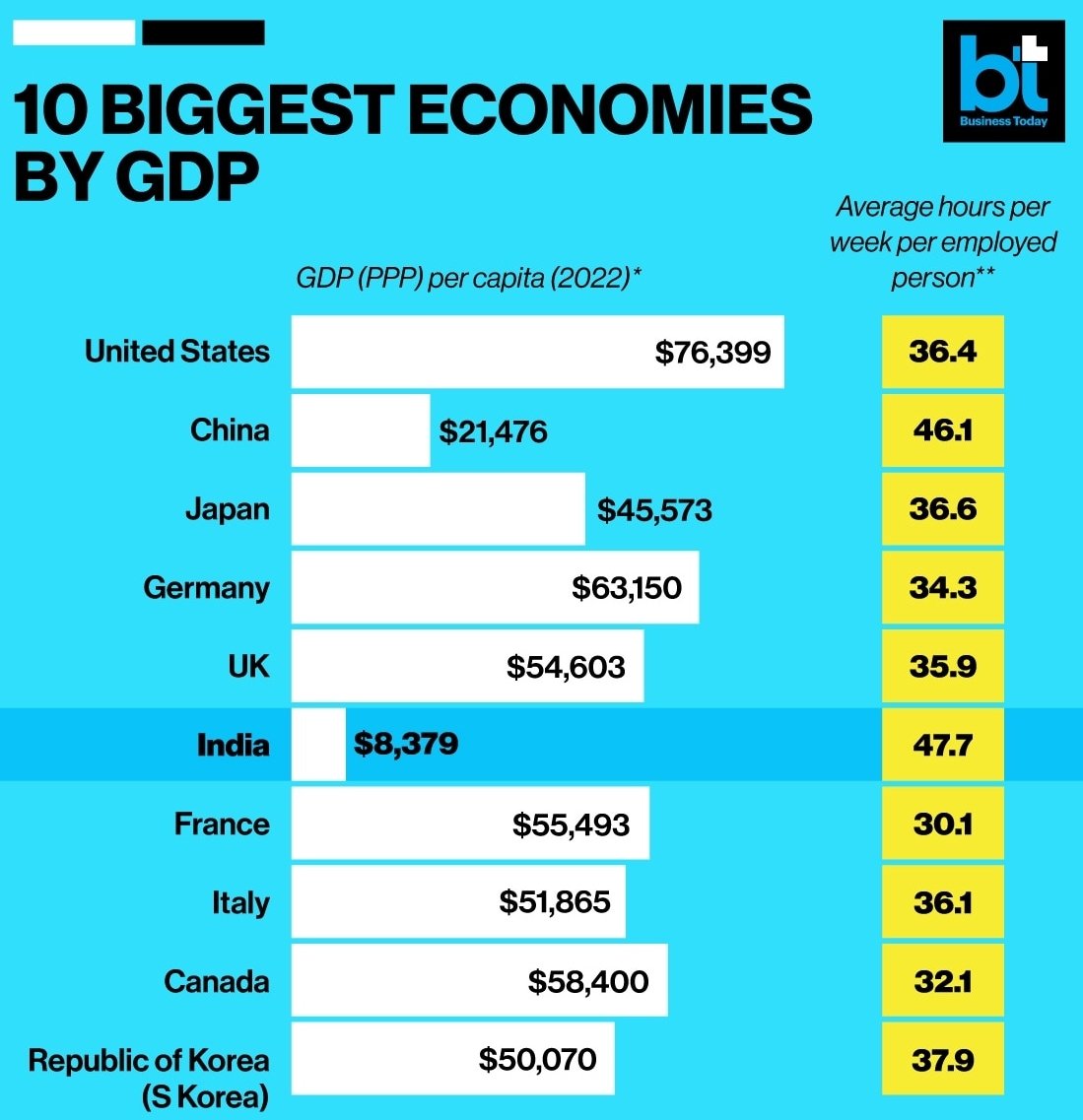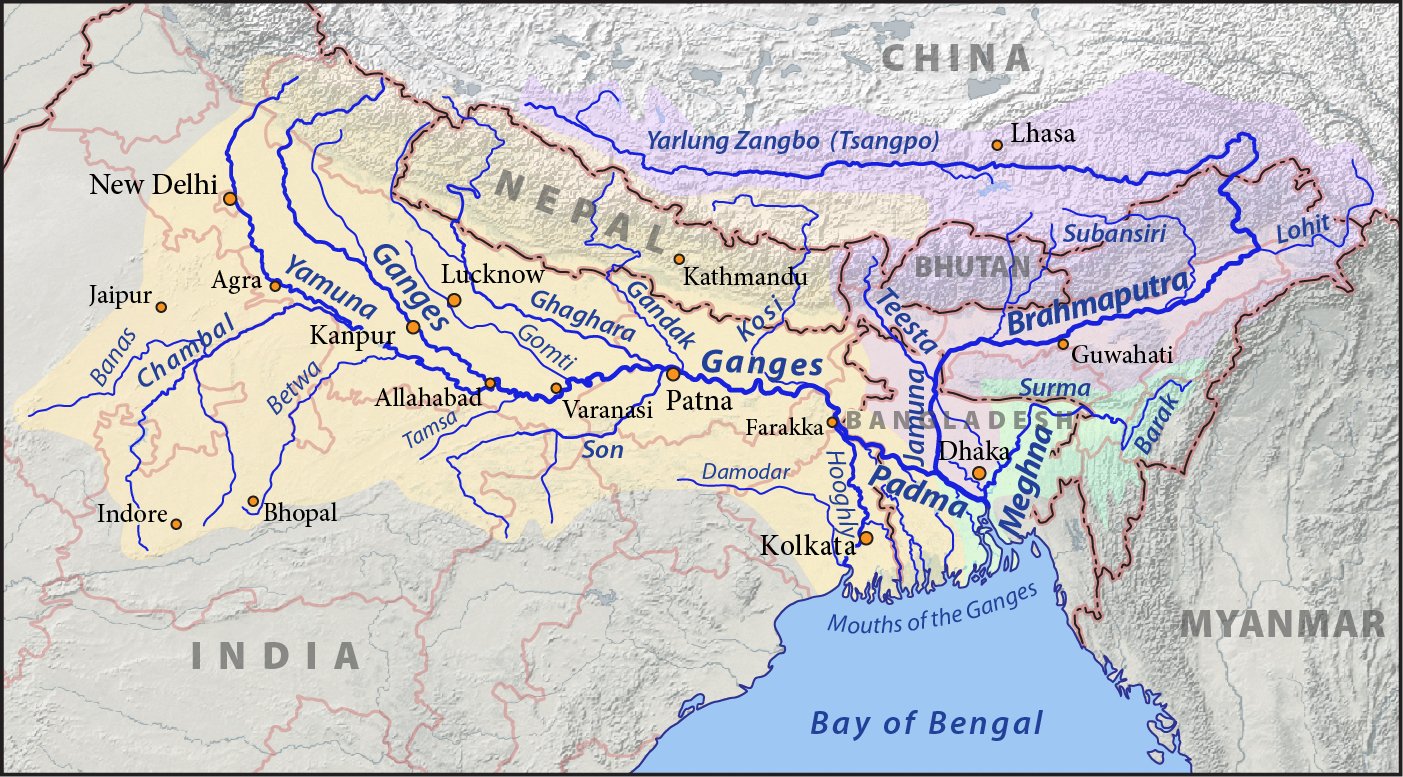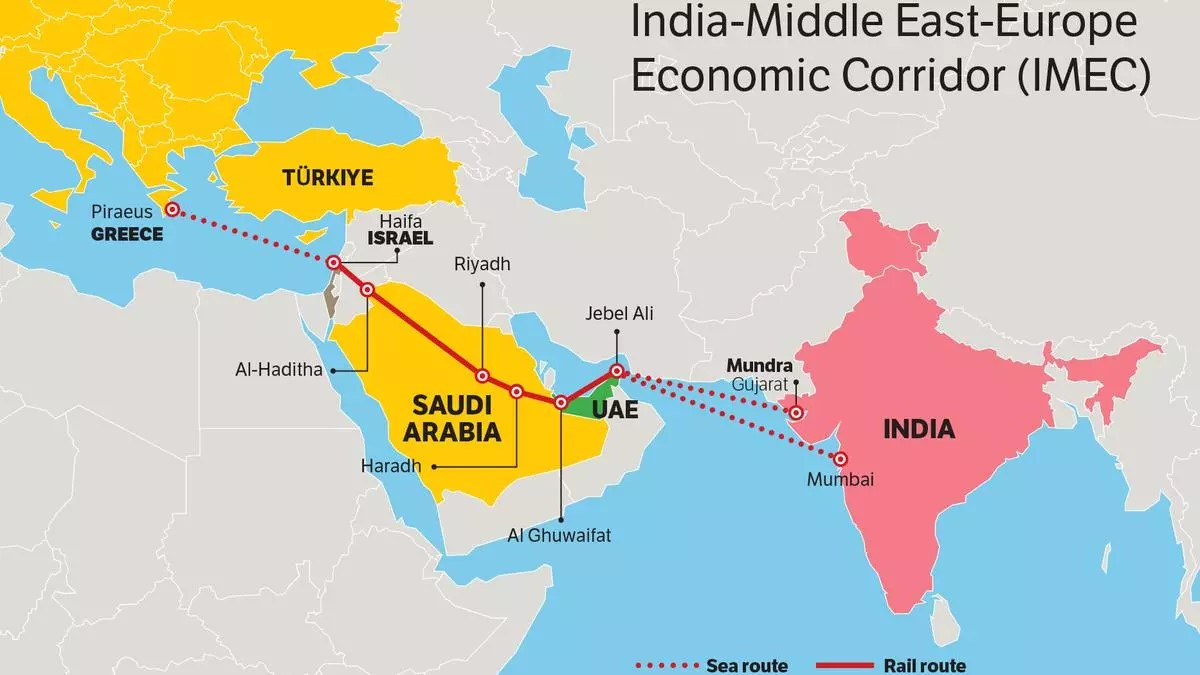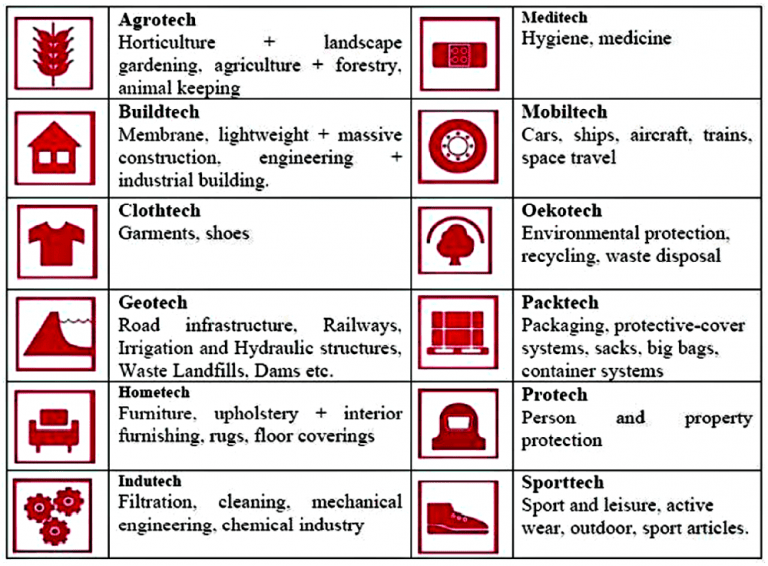
Current Affairs November 11-12, 2023: Disappearance of Saturn’s Rings, Transgenders in India, Baler Machine, Gwalior Gharana, Tuvalu, Surety Bonds
Subscribers of "Current Affairs" course can Download Daily Current Affairs in PDF/DOC
Subscribe to Never Miss an Important Update! Assured Discounts on New Products!
Must Join PMF IAS Telegram Channel & PMF IAS History Telegram Channel
{GS1 – A&C – Festivals} Diwali
- Context (IE): Diwali is the Hindu festival of lights symbolizing the spiritual “victory of light over darkness, good over evil, and knowledge over ignorance.”
- Diwali is connected to various religious events, deities, and personalities, such as Lord Ram’s return to his kingdom in Ayodhya after defeating the demon king Ravana.
- It is also widely associated with Lakshmi (goddess of prosperity) and Ganesha (God of wisdom).
- Lakshmi is believed to roam the earth on Diwali and is welcomed into homes by devotees.
Naraka Chaturdashi (Chhoti Diwali)
- It falls on Chaturdashi (the 14th day) of the Krishna Paksha in the Hindu calendar month of Ashvin.
- According to Hindu literature, on this day, the Narakasura was killed by Krishna and Satyabhama.
Goddess Lakshmi and Her Depictions
- Rig Vedic Period: The Rig Veda mentions Lakshmi once.
- First century BCE: Coins from Gandhara dated to the first century BCE show Lakshmi standing on a lotus, flanked by two elephants.
- Coins from around the same period from Ayodhya, Kaushambi, & Ujjayini depict her as Gaja Lakshmi.
- Gupta Period: She appears on numerous coins of the Gupta period (4th to the 6th centuries CE), including occupying the throne and seated on a lion as ‘Simha-vahini’.
- Ellora caves: Lakshmi is seen with her husband Vishnu and his ‘vahana’ (mount) Garuda.
Sculpture at Sanchi
- A woman is surrounded by lotuses and elephants who seem to sprinkle water on her as if performing an abhisheka or consecration.
- While some historians identify the figure as Maya (the mother of the Buddha), others identify her as the goddess Gajalakshmi.
- The railings of the stupa depict Lakshmi wearing kundalas and jewels, often surrounded by foliage in the second century.


{GS1 – A&C – Music} Gwalior Gharana
- Context (IE): The city of Gwalior in Madhya Pradesh was added to UNESCO’s Creative Cities Network (UCCN) for its “strong commitment to harnessing culture and creativity.”
- Gwalior Gharana is the oldest musical gharana, evolved under the Mughal rule, and is an essential part of Hindustani classical music.
- Gwalior hosted great musicians born in the city or came there to learn from the masters.
- Abul Fazl’s Ain-i-Akbari mentions 36 imperial musicians, out of which fifteen were from Gwalior.
Hindustani classical music
- Hindustani classical music is the classical music of northern regions of the Indian subcontinent.
- The origin of Hindustani classical music can be traced back to the 12th century when it diverged from Carnatic classical music. It is played on instruments like the veena, sitar, and sarod.
- While Carnatic music essentially uses compositions produced in Sanskrit, Kannada, Telugu, Tamil, and sometimes in Malayalam, Hindustani music essentially uses compositions written in Hindi, Punjabi, Rajasthani, Urdu, and Braj Bhasha.
|
Mian Tansen
- He was a Hindustani classical musician and one of Gwalior’s early proteges (student).
- At the beginning of the 16th century, Tansen received training from Swami Haridas and was greatly influenced by the Sufi saint Muhammad Ghous.
- While learning from Ghous, Tansen perfected the Gwalior gharana style and served as a court musician for King Ram Chandra Singh of Rewa for many years.
- Akbar invited Tansen to join his court musicians in the Mughal court. As a Vaishnava musician, he initially refused but eventually joined at the age of 60 after Ram Chandra insisted.
Raja Man Singh Tomar
|
{GS1 – MIH – Personalities} Maulana Abul Kalam Azad
- Context (IE): 11th November was the birth anniversary of Maulana Abul Kalam Azad.
- Maulana Abul Kalam Azad was a freedom fighter, educationist, scholar, and senior leader of the Indian National Congress.
- Azad was born in Mecca to a Bengali father and an Arab mother.
- He propagated his rationalist and nationalist ideas through his newspapers.
- He started the Urdu weekly newspaper Al-Hilal in 1912 and Al-Balagh in 1915.
- He was an exponent of the notion of wahadat-i-deen, the essential oneness of all religions.
- He worked for Hindu-Muslim Unity and opposed Jinnah’s two-nation theory.
Contribution in Education
- He was the first Education Minister of Independent India. National Education Day is celebrated every year on November 11 across India to mark his birth anniversary.
- He was responsible for the establishment of:
- All India Council for Technical Education (AICTE)
- University Grants Commission (UGC)
- The first Indian Institute of Technology – IIT Kharagpur
{GS2 – IR – Groupings} Indo-Pacific Economic Framework
- Context (TH): The Union Minister of Commerce and Industry will visit San Francisco to attend the Leaders and Ministerial Engagements of the Indo-Pacific Economic Framework.
- Indo-Pacific Economic Forum (IPEF) is a US-led economic grouping launched at the QUAD summit in 2022 (in Tokyo, Japan).
- Its focus is primarily on standard setting and facilitating trade.
- It is not a Free Trade Agreement; thus, it does not propose lower tariffs or preferential market access.
- 14 member countries of IPEF:
- All 4 Quad members (India, USA, Australia and Japan)
- 7 members of ASEAN (Except Cambodia, Laos and Myanmar), and
- New Zealand and Fiji.
- The member countries jointly account for about 40% of the global GDP.
- Pillars of IPEF: (1) Trade, (2) Supply Chain Resilience, (3) Clean Energy-Decarbonisation-Infrastructure, and (4) Taxes and Anti-corruption measures.
Significance of IPEF
- Focus on economic prosperity: IPEF aims to establish “high-standard, inclusive, free, and fair-trade” to fuel economic activity and investments in the Indo-Pacific region.
- Strengthening supply chain resilience: It aspires to secure access to vital raw materials, semiconductors, critical minerals, and clean energy tech.
- Hedging against China: ASEAN countries can hedge against China without overtly antagonizing it since it only calls for economic cooperation.
Challenges Associated with IPEF
- US-led, US-Centred initiative: It might become another forum to raise and harbor US tech firms’ commercial interests rather than the interest of the Indo-Pacific region.
- Volatile US leadership: Past unilateral withdrawals from CPTPP (Comprehensive & Progressive Trade Agreement for Trans-Pacific Partnership), the Paris Deal, etc., have impacted USA’s credibility.
- A weak strategic tool for China’s containment: China is much more deeply integrated with many IPEF members through the Regional Comprehensive Economic Partnership (RCEP).
IPEC and India
Opportunities
- Opportunity: With India’s withdrawal from RCEP, IPEF (with several RCEP members) provides India another opportunity to be part of a mega economic arrangement outside the influence of China.
- Resilient supply chains: IPEF members can serve as alternative sources for raw materials requirements. For, e.g. Chips supplied from Malaysia, Minerals from Australia, etc.
- In line with India’s interest: All 4 pillars are aligned with India’s interests. For example, enhanced access to clean energy to meet India’s Panchamrit commitment, announced at UNFCCC COP26.
- Geopolitical significance: India’s joining of IPEF is a solid commitment to Indo-Pacific and efforts to insulate the region against China’s muscular nationalism and expansionist ambitions.
- It also allows India to emerge as a rule maker and not merely a follower of the rules.
Associated Challenges
- Divergent positions: India’s position on cross-border data flows, data localization, e-commerce and privacy rules, and labor, and environmental laws are in stark contrast to the USA.
- Impact on WTO negotiations: The USA can use this framework to pressure India to support a permanent moratorium on customs duties on electronic transmissions at the WTO.
Way Forward
- The 3Ts: Trust, Transparency, and Timeliness mentioned by the PM during the launch ceremony of IPEF – are very important for the success of this initiative.
- Synergise existing initiatives such as B3W (Build Back Better World), QUAD, etc., to avoid duplication of efforts and ensure better outcomes.
{GS2 – IR – Oceania} Tuvalu’s Migration Pact with Australia
- Context (TH | HT | IT): Tuvalu, a tiny island nation, signs a bilateral treaty with Australia to:
- Protect the sinking nation from climate change
- Counter China’s influence in the Pacific
Tuvalu
- Tuvalu, formerly the Ellice Islands, is in the Polynesian subregion of Oceania in the Pacific Ocean.
- It is a group of nine tiny islands that won independence from the UK in 1978. Five islands are coral atolls; the other four are land rising from the sea bed.
- Its capital is Funafuti, which is also the most populous atoll.

|
Tuvalu and Climate Change
- Tuvalu is a low-lying island nation, with no point higher than 4.5m above sea level.
- Approximately 40% of Funafuti’s main atoll gets submerged during king tides, washing away staple crops like taro and cassava.
- Two atolls represented on Tuvalu’s flag of 11 stars have already submerged.
- Most of the country is predicted to be underwater by 2100.
- The UN has identified it as ‘extremely vulnerable’ to the effects of climate change.
|
To be the First Country in the Metaverse
|
Tuvalu and Geopolitical Conditions
- The increasing influence of China in the Pacific region is alarming many Pacific countries.
- Recently, China has struck a security pact with Solomon Islands.
- Tuvalu is one of only 13 countries recognizing Taiwan’s independence and maintaining formal diplomatic relations. So, Tuvalu is also concerned by the Chinese presence in the Pacific.
- By signing the treaty, it positioned Australia as its primary security partner.
China and Taiwan
|
Conditions of the Tuvalu-Australia Treaty
- Climate change: Australia will provide funds for land reclamation in Tuvalu.
- Security: Australia will provide security support if requested by Tuvalu.
- The treaty requires both parties to consult before signing defense agreements with third parties.
- Human mobility: Australia will create a special visa for 280 Tuvaluan annually.
Way Forward for Tuvalu-like Small Island Countries
- For Climate Change Vulnerability: Focus on adaptation, resilience, and cooperation.
- For geopolitical vulnerability:
- Strengthening diplomatic relations with major powers
- Promoting regional cooperation: e.g., Pacific Islands Forum
- Investing in defense and security
- Promoting sustainable development
{GS2 – Social Sector – Education – Issues} Ragging
- Context (TH): Despite laws and regulations prohibiting it, ragging on campuses continues to persist.
- According to the University Grants Commission (UGC), ragging is defined as:
- Any disorderly conduct, whether by words or acts, that has the effect of teasing, treating, or handling with rudeness a fresher or a junior student.
- Indulging in a rowdy or undisciplined activity that causes or is likely to cause annoyance, hardship, or psychological harm or to raise fear or apprehension thereof in a fresher or junior student.
- Asking the students to do any act or perform something that such students will not do in the ordinary course and which has the effect of causing a sense of shame or embarrassment.
- Adverse Effects: Ragging can have severe consequences, including depression, anxiety, and suicide among junior students.
R.K. Raghavan Committee
- The R.K. Raghavan Committee was appointed by the SC.
- It categorized ragging as a form of “psychopathic behaviour & a reflection of deviant personalities.”
- It identified the root causes of ragging and suggested actionable remedies in its 2007 report titled ‘The Menace of Ragging in Educational Institutions and Measures to Curb It’.
UGC Regulations on Curbing the Menace of Ragging in Higher Educational Institutions
- In 2009, in pursuance of the SC order, the UGC framed regulations on curbing the menace of ragging in higher educational institutions to prohibit, prevent, and eliminate the scourge of ragging.
- Many states have failed to implement guidelines to prevent ragging.
- The requisite mandatory actions suggested by UGC:
- Strengthen and augment the anti-ragging mechanism by way of adequate publicity.
- Constitution of Anti-Ragging committee and Anti-Ragging squad.
- Establish anti-aging cells.
- Install CCTV cameras at vital points.
- Conduct surprise inspections of hostels, students, accommodation, canteens, rest cum recreational rooms, toilets, bus stands, and all other strategic locations
Way Forward
- Institutions must create an encouraging atmosphere where teachers and hostel wardens, and not parents living in a distant place, are the first point of contact for victims.
- Governments must implement the regulations strictly and make mental health conditioning a core activity of the curriculum at all levels.
- There must be greater accountability by educational institutions to prevent ragging.
{GS2 – Vulnerable Sections – Transgenders} Transgenders in India
- Context (TH | IE): The Indian Armed Forces are looking at possible employment opportunities for transgenders while examining the Transgender Persons (Protection of Rights) Act, 2019.
Transgender
- The Transgender Persons (Protection of Rights) Act, 2019 defines a transgender person as one whose gender does not match the gender assigned at birth, i.e., whose gender identity does not conform to their biological sex.
- It includes trans-men and trans-women, persons with intersex variations, genderqueers, and persons with socio-cultural identities, such as kinnar and hijra.
Biological Sex vs Gender
|
Transgenders Statistics in India
- Total population: Around 5 Lakh as per the 2011 census. Over 65% of them live in rural areas.
- Literacy level among the transgenders is 56%, as compared to 74% in the general population.
- Work participation is 38%, compared to 46% in the general population.
Challenges Faced by Transgenders
Administrative hurdles
- Their failure to register at birth, & ambiguous definition of transgenders lead to underreporting.
- Lack of accurate identity documents/proofs, income certificates, etc.
- Insensitivity of law enforcement agencies and administrative officials towards crimes against third-gender people.
Social stigma and exclusion
- The community is a victim of unwanted attention where they are insulted and excluded from society, family, religious, and cultural life.
- As per NHRC reports, about 99% have suffered social rejection, including from their families, on more than one occasion.
Discriminatory access to essential utilities
- They are discriminated against regarding access to education, employment, healthcare, political representation, and public places like restaurants, theatres, parks etc.
Health and sanitation problems
- Lack of access to formal healthcare, low immunization levels, nutritional supplements, and medicines.
- The prevalence of HIV among the transgender community is 8% in comparison to the national HIV prevalence of 0.3%.
- Lack of essential public utilities like toilets, high incidence of mental illness, depression, alcoholism, etc. that often goes untreated.
High incidence of illiteracy
- According to Census 2011, the community has only 56% literacy, compared to 74% literacy in the general population.
- Primary reasons for low enrolment and high dropout rates at schools are insensitivity of staff/teachers, bullying, harassment, lack of separate toilets, etc.
Lack of access to basic rights
- Lack of voting rights, right to marriage, adoption, and inheritance rights reduce them to a category of “sub-citizens.”
Unemployment
- Low Labour Force Participation Rate (LFPR) of 38%, Vs. 46% in the general population.
- As per NHRC, 96% of transgender people are forced to take low-paying work or undignified work.
|
Way Forward
- A National level survey to be undertaken to collect socio-economic status of the transgenders for effective delivery of social benefits to them.
- Restoration of civil rights like right to get a passport, ration card, make a will, inherit property and adopt children must be available to all regardless of change in gender / sex identities.
- Strict implementation of the Transgender Act, 2019 and appropriate sensitization training to officials at all levels (Police, prosecutors, judiciary etc)
- Active campaigns to make people aware of sexual identities and to correct patriarchal and transphobic mindset.
- Need for separate HIV sero-surveillance centres, mental health counselling, counselling on sex change operations etc.
- Giving the right of self-determination: International examples of Ireland, Argentina, and Denmark should be followed that allow the transgender community to decide their gender expression and identity without undergoing medical treatment or sex change operations.
Major Provisions of Transgender Persons (Protection of Rights) Act, 2019
- Prohibition against discrimination concerning access to education, health, employment, household, goods and opportunities available to the public, etc.
- A transgender person may make an application to the District Magistrate for a certificate of identity, indicating the gender as ‘transgender.’
- Every transgender person shall have a right to reside and be included in the household.
- Educational institutions funded or recognized by the relevant government shall provide inclusive education, sports, and recreational facilities for transgender persons without discrimination.
- Every establishment is required to designate a person to be a complaint officer to deal with complaints in relation to the Act.
- The government must take steps to provide health facilities to transgender persons, including separate HIV surveillance centers and sex reassignment surgeries.
- The Act recognizes offenses such as forced/bonded labor, denial of use of a public place, denial of residence, and physical, sexual, verbal, emotional, and economic abuse.
- Constitution of a National Council for Transgender (NCT) persons to advise the Central Government on formulating policies, programs, legislation, and projects concerning transgender persons.
{GS3 – Envi – Air Pollution} Baler Machine
- Context (IE | HT): Amidst Supreme Court attention on farm fires, Punjab seeks ex-situ stubble management solutions, driving demand for baler machine.
Stubble Burning
- Post-paddy harvest, farmers must clear stubble before planting the next crop.
- The popular practice the farmers adopt to remove is stubble (parali) burning.
- It is a practice of removing paddy crop residues by setting fire.
- It is common in Oct-Nov across Northwest India, primarily in Punjab, Haryana, and UP.
Negative Consequences of Stubble Burning
- Air pollution: Releases harmful pollutants, like particulate matter, CO, and nitrogen oxides.
- Soil health: It destroys the nutrients and microorganisms necessary for the soil’s fertility.
- Greenhouse gas emissions
Alternative to Stubble Burning
- Both in-situ and ex-situ environment-friendly stubble management mechanisms are there.
Ex-situ Mechanisms
- Biomass co-firing in thermal power plants: Co-firing five 5-7% pellets can prevent 38 million tonnes of CO2 every year
- Production of bio-CNG
- Cattle fodder
In-situ Mechanisms
- Happy seeders and super seeders: Agri implements used for direct seed sowing without prior tillage (zero-till farming).
- Bio-decomposers: Cost effective method. E.g. Pusa bio-decomposer
Why Ex-Situ Mechanisms are Prefered Over In-Situ Mechanisms by Farmers
- Incorporating stubble into the soil using machines like super seeders increases insect problems, requiring harmful insecticides.
- Bio-decomposers take a longer duration to decompose the residues.
Baler Machine: A Necessity for Ex-Situ Stubble Management
- For ex-situ management, farmers cut the crop residue with a tractor-mounted cutter.
- The balers compress agricultural residue into manageable and transportable bales.
- These bales are transported to factories or dumping sites.

Benefits of Baler Machine
- Fields can be immediately plowed and sowed for the next crop
- Extra income for farmers from selling the residue.
Issues with Baler Machine
- High Costs: Without subsidies, a single baler machine costs of around Rs 17-18 lakhs.
- Shoratge of Units: Only 15-18% of rice fields can be covered by the available balers in Punjab.
Way Forward
Subsidy
- Baler machines are provided at a subsidized rate under Crop Residue Management (CRM) scheme.
- Currently 50-80% of balers operating in Punjab are being subsidized under the CRM scheme.
- But still, it is not enough to meet the high demand and high cost of balers.
- The state agricultural department offers subsidies for in-situ management machines, but they lack popularity among farmers.
- Such subsidies can be diverted to increase subsidies on baler machines.
Institutionalised Loans
- The demand for crop residue is increasing among the industries that use it as raw material, like fodder, ethanol production, and thermal plants.
- Based on such demands, easily accessible institutionalized loans can be provided for balers.
Increase in Production Units of Balers
- The country has only two export-oriented manufacturing units, one at Pune and one at Rajkot.
- These units are unable to meet the requirement.
Crop Residue Management (CRM) Scheme
|
{GS3 – Envi – Air Pollution} Fire Crackers Soared Air Pollution
- Context (TH | IE | TH): A day after Diwali, Delhi was ranked as the world’s most polluted city followed by Lahore (Pakistan).
- Two more major Indian cities, Kolkata and Mumbai were also in the top 10 polluted cities.
- PM 2.5 concentration in Delhi is currently 79 times the WHO annual air quality guideline value.
- Reason: Ban on firecrackers flouted in Delhi despite Supreme Court order.
Supreme Court on Fire Crackers
- In 2018, the Supreme Court has:
- banned the production and sale of all crackers except ‘green crackers’ and those with reduced emissions (improved crackers)
- banned the manufacture and sale of ‘joined crackers’ (long rows of crackers joined together)
- prohibited the use of barium salts in fireworks
- The SC before Diwali 2023 clarified that the ban on the use of barium and other banned chemicals in firecrackers applies nationwide, not just National Capital Region.
Why are Firecrackers Harmful
- Firecrackers consist of four primary ingredients, oxidiser, fuel, colouring agents, and binder.

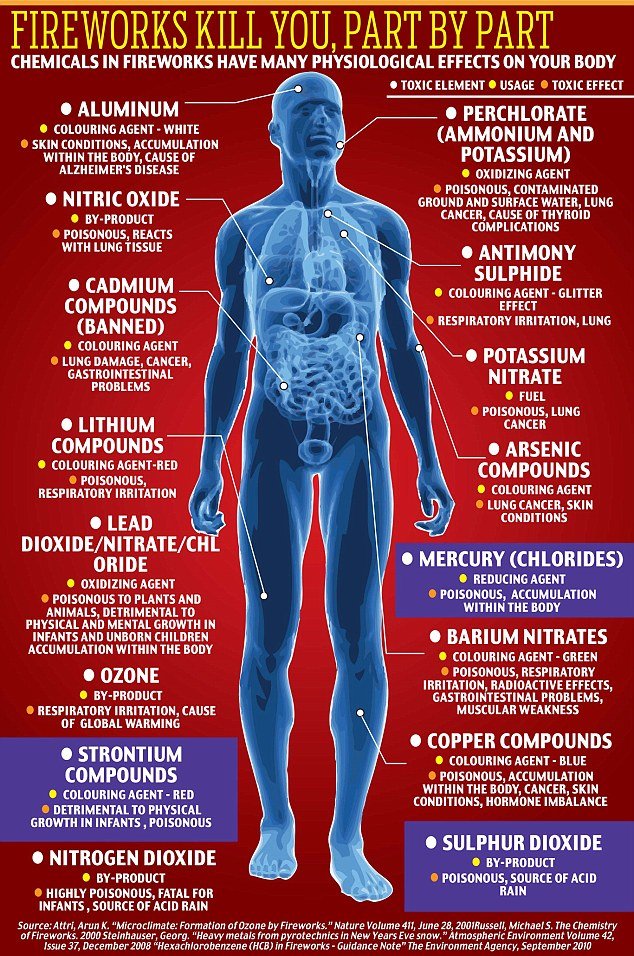
Green Crackers: The Alternative
- Green crackers contain less harmful chemicals that will cause air pollution.
- They use components that are “less dangerous” and “less harmful” to the atmosphere.
- Three categories of such crackers developed by Council of Scientific & Industrial Research are:
- SWAS (Safe Water Releaser): It features a small water pocket that releases vapour upon bursting, effectively suppressing dust.
- STAR (Safe Thermite Cracker): It does not comprise potassium nitrate and sulphur, and emits reduced particulate matter at reduced sound intensity.
- SAFAL (Safe Minimal Aluminium): It has minimum usage of aluminium, and used magnesium instead. This too emits less noise than traditional crackers.


Are Green Crackers Really Eco Friendly
- Green crackers only causes 30% less emissions and lower noise pollution than traditional crackers.
- They still release harmful pollutants and high noise pollution.
- Therefore experts maintain that they are not a safe replacement of traditional crackers.
{GS3 – IE – Inflation} Food Prices
- Context (IE): Wheat and rice prices in the global market have moved in opposite directions. Rice prices have increased due to India’s export restrictions, while wheat prices have decreased.
- Inflation is high in cereals, mainly influenced by domestic production, while edible oil prices have experienced a decline.
FAO Food Price Index (FFPI)
|
Situation in Wheat (India)
- Improved Wheat Availability due to easing international prices and government stocks.
- Export Price Trends: Since March 2022, wheat export prices from various origins have declined. Russia has played a significant role in driving down international wheat prices.
- Import Situation: Wheat imports offer flexibility, but farmers in North and Central India oppose any move to reduce the 40% import duty on wheat.
Situation in Rice (India)
- Rice Export Restrictions: Global rice export prices are currently higher than a year ago due to restrictions imposed by India since July 2023.
- Rice Import Challenge: Unlike wheat, rice faces limited import flexibility because India is the world’s top exporter, accounting for 36.6% to 40.7% of global trade in the last three years.
- Global Impact: India’s export restrictions on rice affect global prices and create a domino effect.
|
{Prelims – IE – Market Instruments} Surety Bonds
- Context (IE | TH): NITI Aayog, has recently accepted the 1st insurance surety bonds as bid security.
- Insurance surety bonds are instruments wherein insurance companies act as a surety and provide the financial guarantee that the contractor will fulfill its obligations as per the agreed terms.
- A surety bond is a legally binding contract entered into by three parties — the principal, the obligee (govt entity), and the surety:
- The Principal: This is the individual/business entity required to perform the contractual obligation.
- The Obligee: The party requiring the guarantee, often the project owner or the entity the principal is contracting with. They are the recipient of the obligation.
- The Surety: This party (usually an insurance company) assures the obligee that the principal can perform the task.
- If the principal fails to fulfill their contractual obligations, the surety compensates the obligee for any losses or finds another contractor to complete the contract.
- Thus, surety bonds help the principal save money by reducing the need for collateral.
{Prelims – PIN} Birdman of India
- Context (TH): 12th November was the birth anniversary of Dr Salim Moizuddin Abdul Ali.
- Salim Ali (Birdman of India) was an Indian ornithologist and naturalist.
- He was among the first scientists to conduct systematic bird surveys in India and abroad.
- After 1947, he became a key figure behind the Bombay Natural History Society.
- He wrote:
- The Book of Indian Birds
- Pictorial Guide to the Birds of the Indian Subcontinent
- Handbook of the Birds of India and Pakistan
|
The Bombay Natural History Society (BNHS)
- It is one of the largest non-governmental organizations in India engaged in conservation and biodiversity research. It was founded in 1883.
{Prelims – Sci – Solar System} Disappearance of Saturn’s Rings
- It is a temporary phenomenon, and the rings will soon reappear.
- The reasons for this temporary disappearance are Saturn’s tilt and an optical illusion.
- Saturn’s axis of rotation has a 26.7° tilt, and its ring system is also tilted to the plane of its orbit.
- As a result, the view of its rings also changes when viewed from the Earth.
- Saturn takes 29.5 years to complete an orbit around the Sun, and every 13 to 15 years, the edge of its rings aligns directly with the Earth. This is called Saturnian Equinox.
- As the rings are very thin at this position, they reflect very little light and become invisible.
|
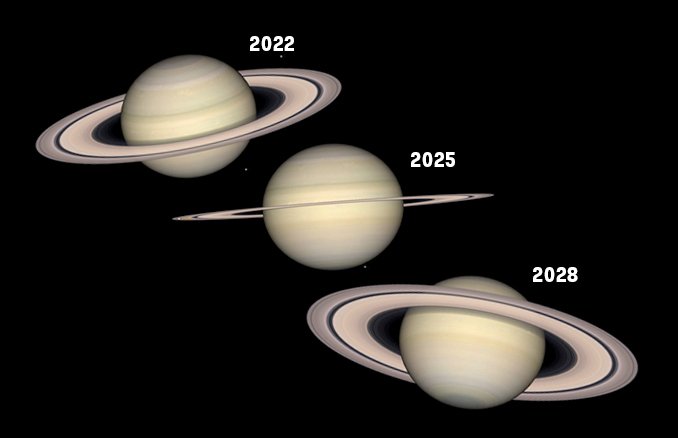
Will the Saturn’s Ring Disappear Permanently in Future
- According to NASA, Saturn will lose its rings completely in 300 million years, or even sooner.
- It will happen because the rings are being pulled into the planet by its gravity as a dusty rain of ice particles (Ring Rain) under the influence of Saturn’s magnetic field.
Saturn’s Rings
- Saturn’s rings are made of small chunks of ice and rock coated with other materials such as dust.
- The main rings are A, B, and C.
- A ring: It is the outermost ring easily seen by Earth based telescopes. It is divided about 20% of the way in from its outer edge by the Encke Division.
- B ring: It is the broadest and brightest. It is separated from Ring A by the Cassini Division.
- C ring: It is dusky and fainter than other two.

Saturn
|




![PMF IAS Environment for UPSC 2022-23 [paperback] PMF IAS [Nov 30, 2021]…](https://pmfias.b-cdn.net/wp-content/uploads/2024/04/pmfiasenvironmentforupsc2022-23paperbackpmfiasnov302021.jpg)
